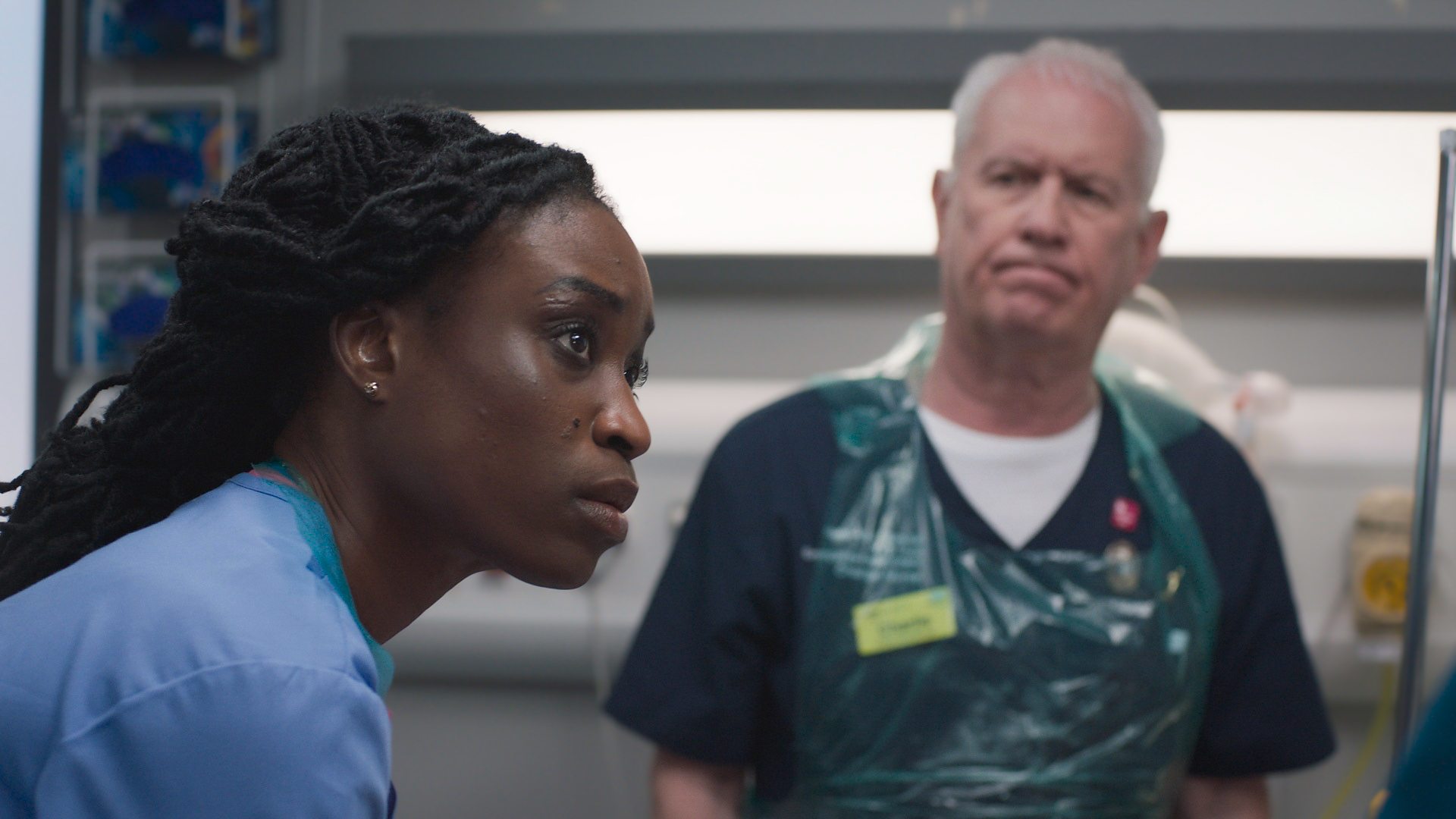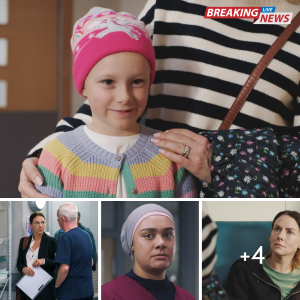Welcome to my latest review of Casualty: A History of Violence. This gripping series premiered on December 30, 2023, and concluded with its 12th episode on March 16, 2024. Executive Producer John Sen has breathed new life into Casualty with this series, offering a bold departure from the traditional format. Instead of following the typical series model, A History of Violence is part of a new box set approach that tackles important themes and tells a cohesive story over several episodes.
In this review, I’ll break down why A History of Violence is a standout chapter in the Casualty saga, and how it brings a powerful mix of emotional storytelling, character arcs, and real-life issues to the forefront. 
The Main Theme: Addressing Violence Within the NHS
The central theme of A History of Violence is the increasing levels of violence within the NHS. The series takes an unflinching look at the real-life dangers faced by healthcare workers, shedding light on the physical and mental toll violence takes on staff. This issue has become even more pressing post-COVID, as key workers are increasingly targeted during their shifts.
Casualty handled this theme exceptionally well, making the storylines not only emotionally compelling but also relevant. The show effectively explores how witnessing or being the victim of violence can lead to PTSD and other mental health challenges for NHS workers. This series is both a reflection of reality and a call to action, shining a light on an issue that needs more attention.
Stevie Nash: A Standout Character and Storyline
For me, the standout character in A History of Violence was Stevie Nash. When Stevie first arrived on Casualty in 2021, I wasn’t immediately sold on her character. But over time, she’s evolved into one of my favorites on the show, and her arc in this series was nothing short of brilliant.
In the first episode, Stevie witnesses a colleague, Ryan, get assaulted, and she takes responsibility for it. This sets off a chain of events where Stevie’s paranoia and need to protect the staff take center stage. As we learn more about her past, including growing up during The Troubles in Northern Ireland, we see how this trauma affects her, especially as she relives similar violent situations in the NHS.
Stevie’s journey was raw and emotional. She starts the series vulnerable and broken, but by the end, she has gained confidence, culminating in her saving Charlie’s life. This character arc was one of the most satisfying aspects of the series, and I have to give a huge shoutout to Ellena Lawless for her exceptional performance. 
Rash’s Heartbreaking Storyline with His Father
Rash’s storyline in A History of Violence was equally powerful. His father’s battle with dementia has been a slow burn, but this series takes it to heartbreaking new heights. Watching Rash struggle to care for his father, who can no longer recognize him, was gut-wrenching. But the plot twist—his father dying after being struck by a bus—was a shocking moment that hit hard.
NE Mohan’s performance as Rash in these scenes was incredible. The grief and raw emotion he conveyed left me in tears, and it’s a testament to the quality of acting on Casualty that these moments felt so real.
Max and Jod: A Letdown in Character Development
While the majority of the characters in A History of Violence were well-developed, the storyline surrounding Max and Jod was a bit of a letdown. Max’s kidney failure was a major plot point, and while his relationship with Jod was central, the resolution felt rushed. Max’s sudden decision to leave after receiving a kidney transplant didn’t feel earned, and it was disappointing to see his arc end this way.
Max’s departure from Casualty felt abrupt, especially after all the build-up to his relationship with Jod. I feel like the show missed an opportunity to make this a more emotional, meaningful conclusion.
Ian’s Personal Struggles: A Tension-Filled Subplot
Another character that took center stage in A History of Violence was Ian. His personal struggles, particularly with Faith’s daughter Natalia, were a constant source of tension. While Ian’s heart is always in the right place, his tendency to dig himself into a hole made for some frustrating moments. Ian’s failure to confront Faith about Natalia’s crush felt like a missed opportunity for growth, and the unresolved tension between them left the story on a bit of a cliffhanger.
Despite these frustrations, Ian’s character continues to evolve, and I’m curious to see where his storyline goes in the future. 
Charlie Fairhead’s Emotional Departure: A Perfect Sendoff
The two-part finale marking Charlie Fairhead’s departure was absolutely stunning. After 37 years on the show, Charlie’s final moments were emotional, and Derek Thompson’s portrayal of the character in these episodes was nothing short of extraordinary.
The first part, where Charlie is stabbed, left fans on the edge of their seats, unsure of what would happen next. But the second part, where Charlie survives and ultimately retires from the NHS, was a beautiful sendoff. The return of Zoe and Josh to say goodbye to Charlie was a nice touch, and the emotional scenes between Charlie and Stevie were especially poignant.
The hospital’s yellow Beetle retirement gift was a fitting tribute to Charlie’s legacy, and I’m sure many long-time Casualty fans felt the emotional weight of this moment.
Final Thoughts: A History of Violence at Its Best
A History of Violence is hands down one of Casualty’s best series. With well-written storylines, incredible acting, and thrilling moments, this box set sets a high bar for future Casualty episodes. While some storylines could have been improved—namely Max and Jod’s rushed resolution—the series as a whole is a triumph.
From the powerful performances by the cast to the emotional character arcs, this series will go down as one of the most memorable in Casualty history. If you haven’t watched it yet, I highly recommend giving it a go.





